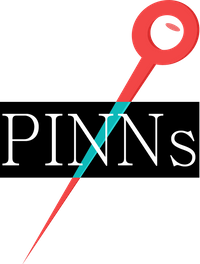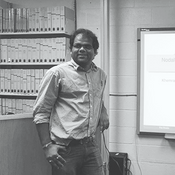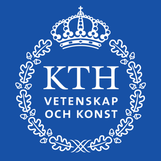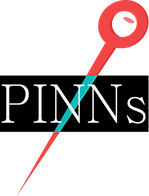Welcome to 2024 PhD Summer School
"Physics-Informed Neural Networks and Applications"
When & Where
8-14th of July 2024 Lectures (in-person)
15-23th of July 2024 Project work (hybrid)
KTH Royal Institute of Technology
Stockholm, Sweden
Registration is closed
Accepted participants will be notified soon
Summer School Information
Due to limited funds we are only able to offer up to 30 spots.
You will be informed shortly after the deadline if your application was selected.
Fee for PhD students: 100 EUR
(we are working towards enabling fee waiver for all academic participants)
Fee for industry participants: 400 EUR
Teachers
Khemraj Shukla
Associate Professor of Applied Mathematics, Brown University
Raj will teach the main course syllabus
Other lectures:
Prof. Jennifer Ryan, KTH
Assist. Prof. Matthieu Barreau, KTH
Dr. Kateryna Morozovska, KTH
Teaching Assistants:
Federica Bragone, Lorenzo Branco, Nicole Rossi
The course syllabus is adapted for participants from engineering disciplines and is focused on providing practical guidance towards the application of PINNs and Deep Learning to problems in engineering research disciplines.
Participants should be aware that the course target group is PhD students and researchers in engineering disciplines. We encourage PhD students who will be taking a full version of the course to propose projects that are related to their research.
Prerequisites & credits
1. Knowledge of at least one programming language.
2. It is preferable that course participants have a working knowledge of Python*
*For those who are less familiar with Python a primer on Python, NumPy, SciPy, and Jupyter Notebooks will be taught during the program
4. We encourage participants of the project work to prepare datasets they can use.
5. The course lectures will be credited as 2 ECTS. If you wish to do course project (can be both in person or hybrid) the final number of credits is 5 ECTS after successful project presentation and reporting.
Lecture overview
The course syllabus will cover a variety of topics:
- Introduction to Deep Learning Networks
- Neural Network
- TensorFlow, PyTorch, JAX
- Discovery of differential equations
- Physics-Informed Neural Networks (advanced)
- DeepONet
- {DeepXDE} or {MODULUS}
- Uncertainty quantification
- Multi-GPU machine learning
Project scope overview
We encourage course participants to formulate projects related to their area of research.
Additional project topics will be provided for selection.
Examples of project areas
- Biomedicine: Modelling blood coagulation
- Control: System identification and decision making
- Dynamical Systems: Charged particles in the electromagnetic field
- Engines: Learning engine parameters
- Fluid Mechanics: Bubble growth dynamics
- Geophysics: Diffusion-reaction in porous media
- Heat Transfer: Non-linear Inverse heat conduction problem
- Materials: Modulus identification of hyperelastic material
Travel in Stockholm
Public transport operates under one ticket system, covering: subway, trains, trams, busses and even several ferry connections.
To use public transport you should purchase your ticket using Sl.se look for respective applications for android and iPhone.
Ticket can also be purchased at the chasier in the subway station or at the train station or you can pay directly with your VISA or MasterCard by using it to enter any of the abovementioned transports.
Airport
If possible, we recommend that you fly into Arlanda airport, which is the main international airport for the Stockholm region. Additionally, there are two other airports in the area: Bromma airport, a smaller city airport, and Skavsta airport, which is located farther out of town and mainly serves Ryan Air flights.
To reach the town from the airport you can use the following serives:
Arrive to KTH campus
You can reach the principal campus of KTH from the main train station getting to the station called Tekniska Högskolan by subway.
Once to the KTH main campus, you can refer to campus map to find the PINNs summer school facilities.
Sponsors
KTH Digitalization Platform
Contact organizers
For general inquiries
info@pinns.se
For registered participants
2024@pinns.se




